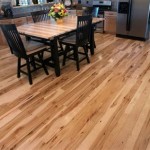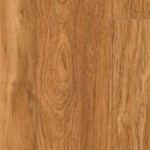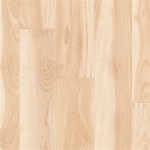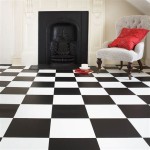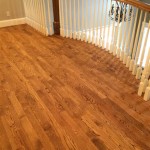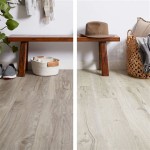How To Tell If Laminate Flooring Is Good Quality
Laminate flooring has become a popular choice for homeowners seeking an affordable and durable alternative to hardwood. Its layered construction and photographic top layer offer a wide range of aesthetic options, mimicking wood, stone, and tile at a fraction of the cost. However, just like any other building material, the quality of laminate flooring can vary significantly. Selecting a high-quality laminate is crucial to ensure longevity, resistance to wear and tear, and overall satisfaction with the flooring investment. This article outlines key factors to consider when evaluating the quality of laminate flooring and making informed decisions.
Assessing the Abrasion Class (AC) Rating
The Abrasion Class (AC) rating is a paramount indicator of laminate flooring's durability and suitability for different levels of foot traffic. This rating is determined through a standardized test that simulates the wear and tear caused by everyday use. The higher the AC rating, the more resistant the laminate is to abrasion, scratches, and impacts.
AC ratings range from AC1 to AC5. AC1 is the least durable, suitable for light residential use such as bedrooms or closets. AC2 is suitable for moderate residential use, such as living rooms or dining rooms. AC3 is recommended for general residential use and light commercial applications, like home offices or small retail spaces. AC4 is designed for heavy residential use and moderate commercial applications, such as offices or boutiques. AC5 is the most durable, designed for high-traffic commercial areas like department stores or public buildings.
When selecting laminate flooring, carefully consider the intended use of the room. For high-traffic areas like hallways, kitchens, and entryways, an AC4 or AC5 rating is highly recommended to ensure the flooring withstands daily wear and tear. For less frequently used rooms, an AC3 rating may suffice. Always prioritize a higher AC rating if there's any doubt about the level of traffic the floor will endure. This will contribute to a longer lifespan and minimize the need for premature replacement.
Evaluating Core Board Density and Thickness
The core board is the foundation of laminate flooring, providing structural integrity and resistance to moisture. The density and thickness of the core board significantly impact the flooring's overall quality and performance. High-Density Fiberboard (HDF) is generally considered a superior core material compared to Medium-Density Fiberboard (MDF) due to its increased density and resistance to moisture absorption.
A denser core board provides greater resistance to impacts, preventing dents and damage from dropped objects or heavy furniture. Furthermore, a dense core board is less susceptible to swelling and warping when exposed to moisture, making it a better choice for areas prone to spills or humidity. In contrast, a less dense core board may be more prone to damage and moisture-related issues, potentially leading to premature failure of the flooring.
The thickness of the core board also contributes to the flooring's stability and sound absorption. Thicker laminate planks, typically ranging from 8mm to 12mm, offer greater rigidity and reduce the likelihood of flexing or squeaking underfoot. They also provide better sound insulation, minimizing noise transmission between floors. While thinner laminate planks (6mm to 7mm) may be more budget-friendly, they often compromise on durability and sound absorption. Aim for at least an 8mm thickness for residential applications and consider 10mm or 12mm for high-traffic areas or areas where sound insulation is a priority.
To assess core board quality, try to obtain a sample piece of the laminate flooring. Inspect the edges of the plank for any signs of chipping or flaking, which can indicate a low-density core board. Compare the weight of different samples; denser core boards will generally feel heavier. Consult the manufacturer's specifications to verify the core material and density.
Analyzing the Quality of the Wear Layer
The wear layer is the topmost transparent layer of laminate flooring that protects the decorative layer (the photographic image) from scratches, stains, fading, and general wear and tear. The quality and thickness of the wear layer directly impact the laminate's longevity and aesthetic appeal. A thicker, more durable wear layer will provide better protection against everyday damage, ensuring the flooring maintains its appearance for a longer period.
The wear layer is typically composed of aluminum oxide or melamine resin. Aluminum oxide is generally considered more durable and scratch-resistant compared to melamine resin. The thickness of the wear layer is measured in mils (thousandths of an inch). Wear layers typically range from 12 mils to 30 mils. For residential applications, a wear layer of at least 12 mils is recommended, while high-traffic areas may benefit from a 20-30 mil wear layer. A thicker wear layer will provide enhanced protection against scratches from pets, furniture, and foot traffic, as well as resistance to stains from spills and dirt.
Examine the wear layer closely for any imperfections, such as cloudiness, discoloration, or unevenness. A high-quality wear layer will be smooth, clear, and free from defects. You can also perform a simple scratch test by gently scratching the surface of the sample with a coin or key. Observe whether the wear layer shows any visible scratches or marks. A more resistant wear layer will be less prone to scratching. Inquire about the wear layer's composition and thickness from the manufacturer or retailer to make an informed decision.
Examining the Locking System
The locking system is the mechanism that connects the laminate planks together, creating a seamless and stable flooring surface. A high-quality locking system is crucial for easy installation, a secure fit, and long-term stability of the floor. A poorly designed or manufactured locking system can lead to gaps, uneven surfaces, and potential water damage.
There are various types of locking systems available, including click-lock, tongue-and-groove, and glue-down systems. Click-lock systems are the most popular and user-friendly, allowing for easy installation without the need for glue or nails. The quality of a click-lock system depends on the precision and strength of the interlocking profiles. A well-designed click-lock system will provide a tight and secure connection between planks, minimizing the risk of gaps or movement. Ensure that the locking mechanism is robust and can withstand repeated locking and unlocking without damage.
When evaluating a locking system, try to connect and disconnect a few sample planks. The planks should easily snap together with minimal effort, and the connection should feel secure and stable. Avoid locking systems that require excessive force or feel flimsy. Inspect the interlocking profiles for any signs of damage or weakness. A damaged or poorly manufactured locking system can compromise the integrity of the entire floor.
Consider the installation method when selecting laminate flooring. Click-lock systems are ideal for DIY installations, while glue-down systems typically require professional installation. Choose a locking system that is appropriate for your skill level and budget.
Considering the Reputation of the Manufacturer
The reputation of the laminate flooring manufacturer can be a valuable indicator of product quality and reliability. Established and reputable manufacturers often have a strong track record of producing high-quality products and providing excellent customer service. Researching the manufacturer's history, certifications, and warranty policies can help you make an informed decision.
Look for manufacturers that adhere to industry standards and certifications, such as the North American Laminate Flooring Association (NALFA) certification. NALFA certification ensures that the laminate flooring meets rigorous performance standards for durability, stain resistance, and moisture resistance. Check online reviews and testimonials to gather feedback from other customers about their experiences with the manufacturer's products and customer service. A manufacturer with consistently positive reviews is more likely to provide a quality product and reliable support.
Evaluate the manufacturer's warranty policy. A comprehensive warranty can provide peace of mind and protect your investment against defects in materials and workmanship. Pay attention to the terms and conditions of the warranty, including the duration of coverage and any exclusions. A longer warranty period typically indicates the manufacturer's confidence in the durability and longevity of their product.

How To Tell If Your Floor Is Hardwood Or Vinyl Garrison Collection

Vinyl Plank Vs Laminate Flooring Which Is Right For You Onflooring

How Do You Know It S Time To Replace Your Laminate Flooring Southside Building Center

Laminate Floors 10 Keys To Success For Living Houston Tx

How To Tell If Engineered Hardwood Is Good Quality Signs Of High Wood Floor

Engineered Hardwood Vs Laminate Flooring

Determining The Direction To Lay Install Hardwood Laminate Or Luxury Vinyl Plank Flooring

How Does Laminate Flooring Really Hold Up A Six Year Review

Floating Floors Vs Non What Gives

10 Signs That It S Time To Replace Your Wood Laminate Flooring
Related Posts

